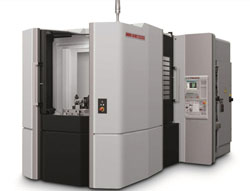CNC milling machines are used for the shaping of metal and other solid material and there isn’t much nowadays that hasn’t involved CNC machining somewhere in the manufacturing process. Cars, aeroplanes, machine parts, moulds for household machines, toys and prosthetics etc. are all likely to have CNC machined components.
Early milling machines were manually or mechanically operated but developed to be CNC controlled – Computer Numerically Controlled. Computer programmes control and drive the machining centre, with help from an operator and they have now also moved on from 3 axis to 4 and 5 axis machines enabling much more intricate parts to be produced.
With most CNC machine programmes produced using CAD/CAM software you may think that the human skills in the CNC processes are minimal. However, this is not the case. The process for producing items using CNC technology means that whilst the processes are now more automated for accuracy and efficiency, the skills of the operator are still required. Not only do they need to understand the specifications, set up the tooling and decide on the cutting conditions based on materials, but they also need to be able to see that the finished product meets those specifications etc.
The maintenance of the machine is also something an operator needs to understand. If something isn’t running correctly or a finished product is not being produced as expected the operator needs to understand where to start looking for the problem. A well maintained machine is an efficient machine and it’s the operators that are the first to spot when things aren’t right. Spotted early, faults or just lack of efficiency due to wear and tear can save a business money.
We mentioned earlier the development from 3 to 5 axis machining which gives greater flexibility and accuracy. A 5 axis machine can complete more complex tasks without the need to reset the piece or change the tooling. However, higher levels of precision machining, need higher levels of CAD/CAM programming and so a higher skill level of operator.
To an outsider, the developments in manufacturing processes and machining, and the inclusion of more automation looks on the face of it, as though the skills levels required may be reducing, but that’s far from the truth. Manufacturing processes, including CNC machining are developing in such a way that while some of the more ‘mechanical’ parts of machining are being automated the knowledge of the operators is actually having to increase.
Earlier this year German tool manufacturer Hermle integrated additive manufacturing capabilities into a 5 axis machining centre. Not only do you already have a higher level of knowledge required for 5 axis machining but with the combination of additive manufacturing comes a required knowledge of mixed metal solutions.
Here at PRV Engineering we have 30 CNC machining centres are always on the lookout for good staff. If you’re interested in coming and working with us get in touch.


Recent Comments